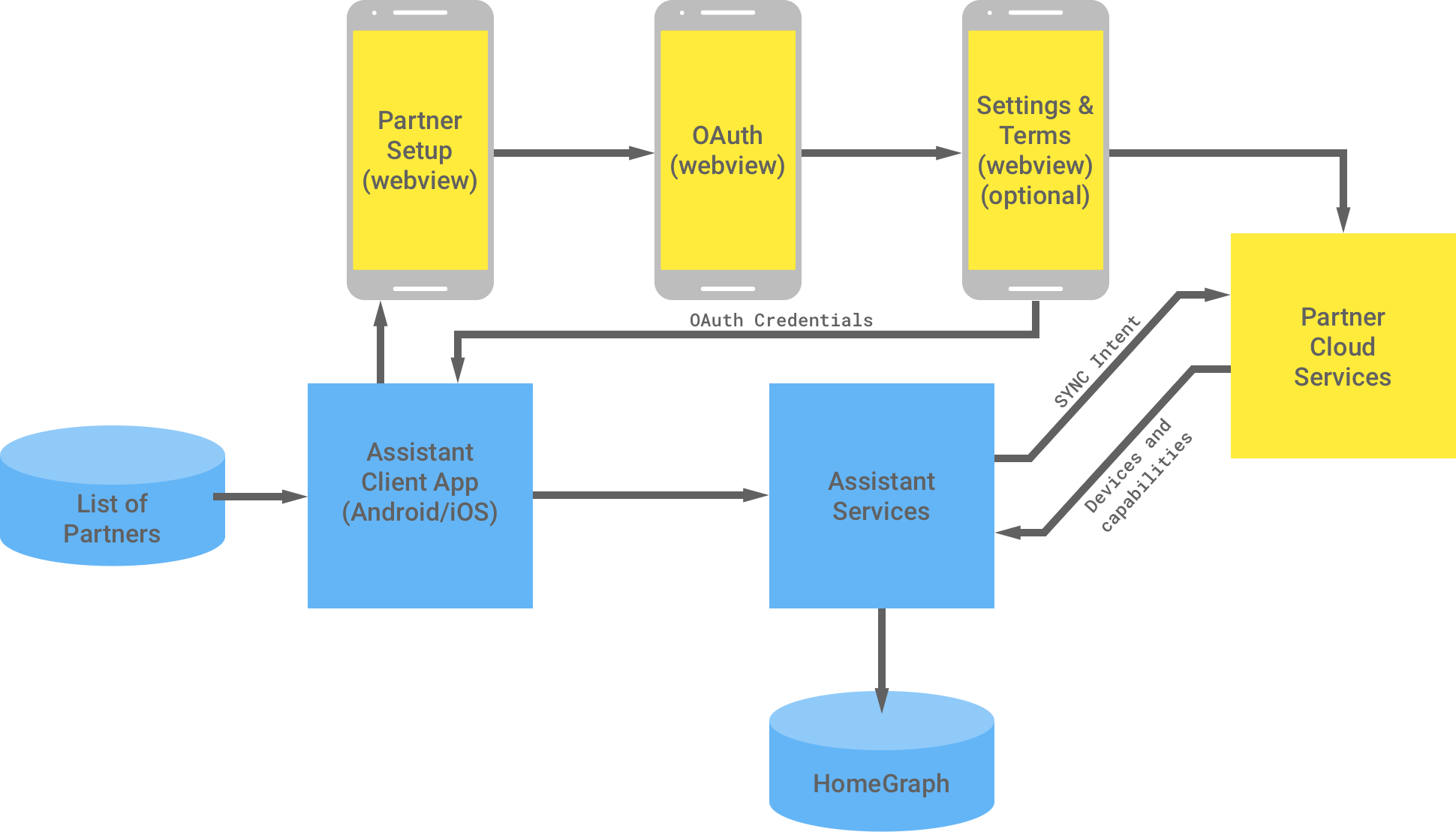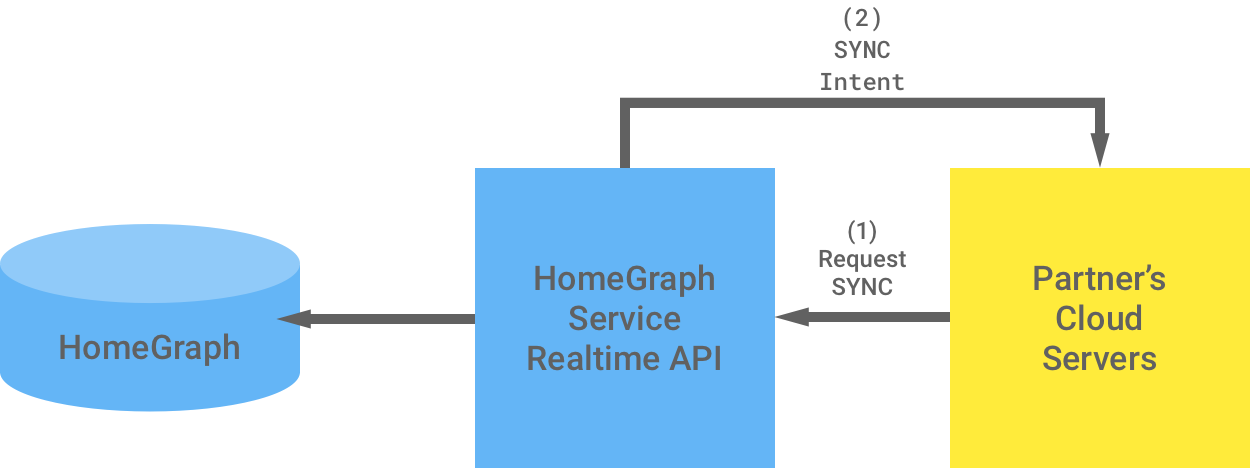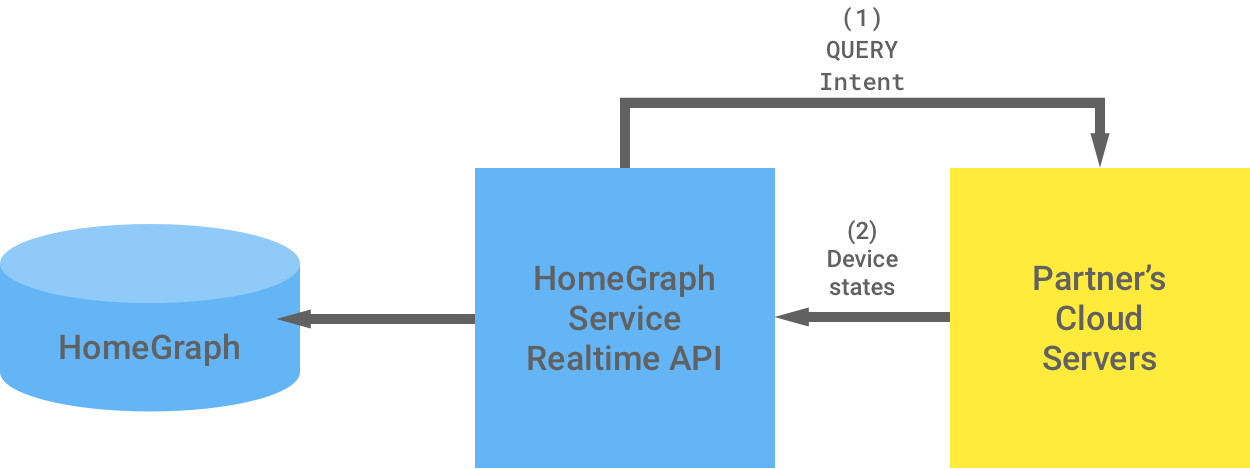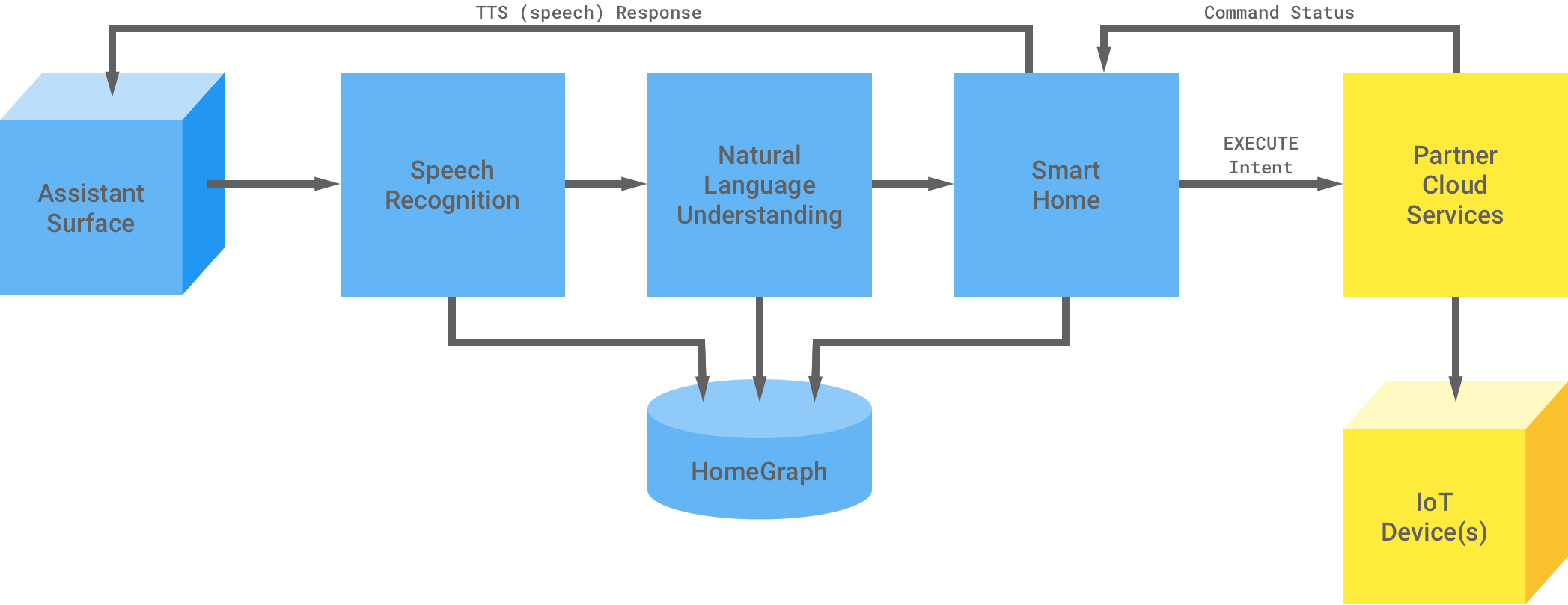Smart home intents are simple messaging objects that describe what Cloud-to-cloud integration to perform such as turn on a light or cast audio to a speaker.
All of the smart home intents are contained in the
action.devices namespace and you must provide fulfillment for them. Whenever
Google Assistant sends an intent to fulfillment, a user's
third-party OAuth 2 access token is passed in the Authorization header.
These are the supported smart home intents:
SYNC
The action.devices.SYNC intent is used to request the list of
smart home devices that the user has connected and are
available for use.
When a user sets up their devices with the Google Home app (GHA), they also
get authenticated to your cloud infrastructure. Then,
Assistant receives an OAuth2 token. At this point,
Assistant sends a action.devices.SYNC intent to your
fulfillment to retrieve the initial list of user devices and capabilities from
your cloud infrastructure.

To avoid unlinking and relinking a user's account, you can send a request sync
to Assistant. This sends the action.devices.SYNC intent
to your fulfillment to sync the list of devices and capabilities. See
Implement Request Sync for more
information.

During local fulfillment setup, the
Local Home platform checks the SYNC response from your
smart home Action's cloud fulfillment. To learn more about how
to modify your SYNC response to support local fulfillment, see
Update SYNC response in cloud fulfillment.
QUERY
The action.devices.QUERY intent is used to query the current state
of smart home devices.
When users are querying device status, to answer a question such as
Hey Google, what lights are on in the kitchen?,
Assistant sends a action.devices.QUERY intent to your
fulfillment.

For the best user experience, you should implement Report State to proactively report the current state of a user's devices directly to Google Home Graph. For example, this lets Assistant know if your user turned on a smart light with a physical light switch.

EXECUTE
The action.devices.EXECUTE intent is used to provide commands
to execute on smart home devices.
When users send commands to devices with Assistant, your
fulfillment receives a action.devices.EXECUTE intent to your fulfilment that
describes the action and the devices to act upon. A user can execute an action
on a device with a command such as Hey Google, turn on my living room lights.

DISCONNECT
The action.devices.DISCONNECT intent is triggered to inform you
when a user has unlinked the app account from Assistant.
After receiving a action.devices.DISCONNECT intent, you should not report
state for this user's devices.
